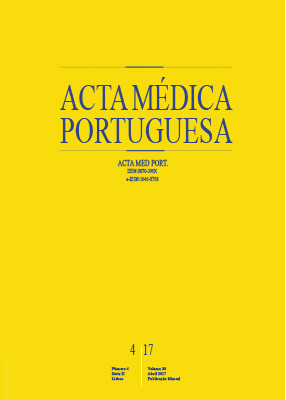Anxiety, Family Functioning and Neuroendocrine Biomarkers in Obese Children
DOI:
https://doi.org/10.20344/amp.7919Keywords:
Anxiety, Biomarkers, Child, Hypothalamo-Hypophyseal System, Pediatric Obesity, Pituitary-Adrenal System, Stress PsychologicalAbstract
Introduction: This observational study explores potential links between obese children’s cortisol, and parental mental state, family functioning, and the children’s symptoms of anxiety and depression.
Material and Methods: A non-random sample of 104 obese children (55 boys), mean age 10.9 years (standard deviation 1.76), was recruited from a childhood obesity clinic. Obesity was defined as body mass index above the 95th age- and gender-specific percentiles. Neuroendocrine biomarkers were measured. Symptoms of anxiety and depression were assessed with self and parent-reported questionnaires (Anxiety, Depression and Stress Scales; Child Behaviour Checklist). Family functioning was assessed with parent-reported questionnaires (Family Adaptation and Cohesion Scales-III).
Results: A significant, negative correlation (rs = -0.779; p = 0.003) between girls’ cortisol and their parents’ anxiety symptoms was found, limited to high functioning families. Boys scored significantly higher than girls on parent-reported internalizing symptoms but not on self-report. No association was found between cortisol in children and parental depressive symptoms.
Discussion: Whether the association between cortisol levels in obese children and parental mental health is effectively restricted to girls from high functioning families or is due to study limitations, requires further research. The lack of associations between cortisol in children and parental depressive symptoms, suggests a specific association between cortisol and parental anxiety symptoms.
Conclusion: These results highlight the importance of taking into account family functioning, parental mental state and gender, when investigating neuroendocrine biomarkers in obese children associated with symptoms of anxiety and depression.
Downloads
Downloads
Published
How to Cite
Issue
Section
License
All the articles published in the AMP are open access and comply with the requirements of funding agencies or academic institutions. The AMP is governed by the terms of the Creative Commons ‘Attribution – Non-Commercial Use - (CC-BY-NC)’ license, regarding the use by third parties.
It is the author’s responsibility to obtain approval for the reproduction of figures, tables, etc. from other publications.
Upon acceptance of an article for publication, the authors will be asked to complete the ICMJE “Copyright Liability and Copyright Sharing Statement “(http://www.actamedicaportuguesa.com/info/AMP-NormasPublicacao.pdf) and the “Declaration of Potential Conflicts of Interest” (http:// www.icmje.org/conflicts-of-interest). An e-mail will be sent to the corresponding author to acknowledge receipt of the manuscript.
After publication, the authors are authorised to make their articles available in repositories of their institutions of origin, as long as they always mention where they were published and according to the Creative Commons license.









